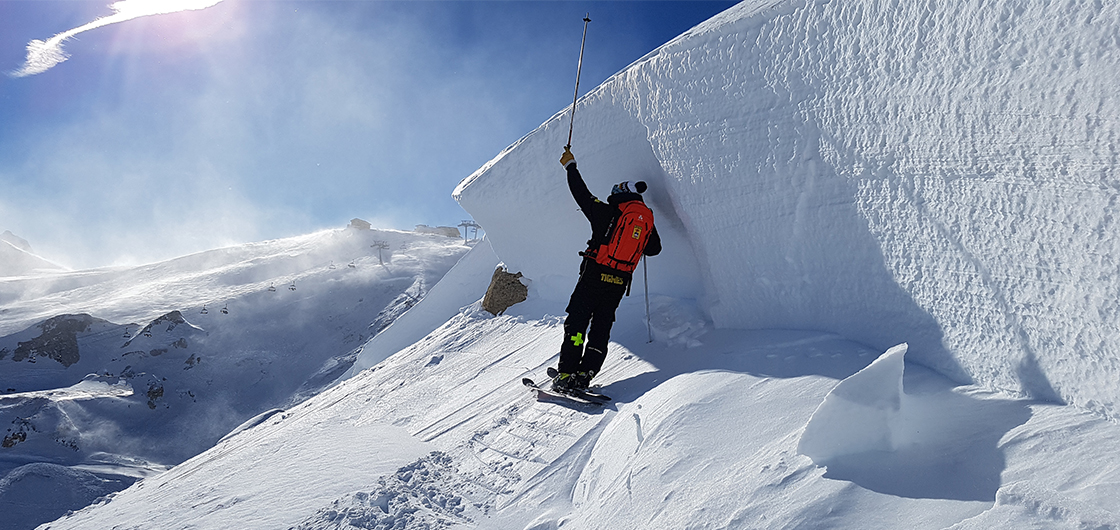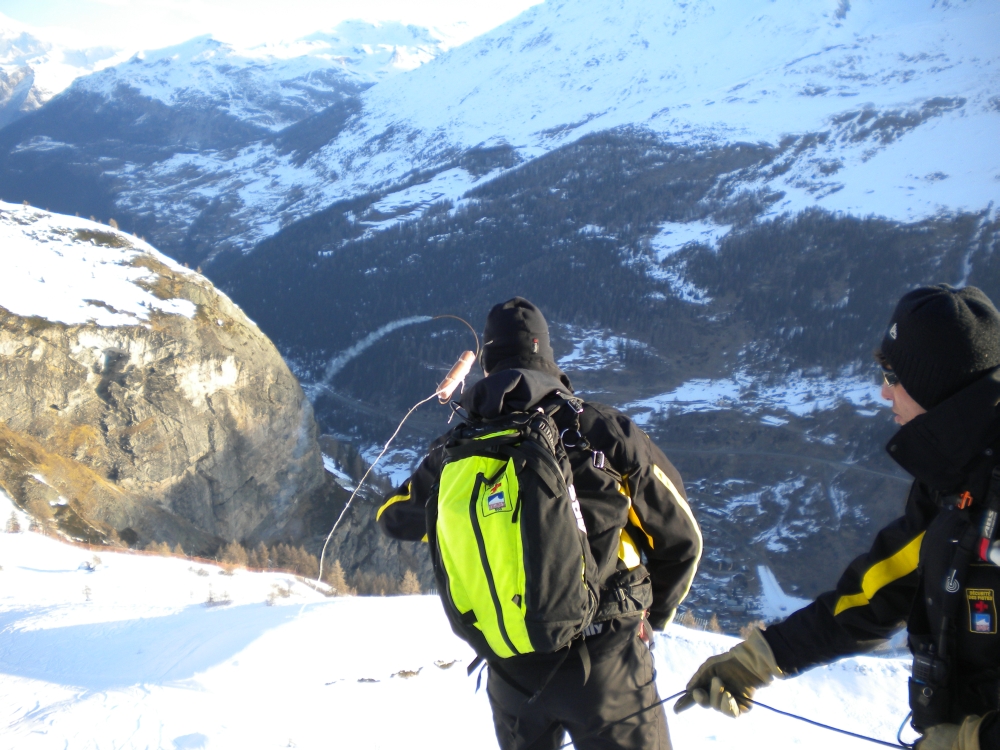
Everything you've always wanted to know about keeping the ski area safe but never dared ask!
You are familiar with their role as ski patrollers, but did you know that the team of 58 ski patrollers in the resort are also responsible for making the Tignes ski area safe? Olivier Ducastel, director of the “Régie des Pistes” (Piste Management), tells us more about the explosions you hear early in the morning…
What do the safety procedures consist of?
We set off controlled avalanches using explosives in areas that have a historical record of being at high risk from avalanche. Colloquially speaking, we refer to this practice as the “PIDA: Plan d’Intervention de Déclenchement des Avalanches” (Controlled Avalanche Detonation Plan).
Consequently, in the Tignes ski area alone, there are 150 detonation points listed in the “PIDA” plan.
Which areas do the “Régie des Pistes” look after?
As the name indicates, the “Régie des Pistes” (Piste Management) is in charge of keeping the ski runs safe! However, in reality, its framework for intervention is much greater.
Therefore, the ski patrollers are responsible for the safety of the workforce in the ski area (snowplough operators, ski lift engineers etc.), but also the roads and residences located below slopes that could potentially present a risk.
I would like to take this opportunity to remind you that the off-piste areas have, by definition, not been made safe. So be careful!
How do you decide on a response plan?
We refer to three main sources of information to help us with our decision-making:
- The snow and weather forecast by Météo France in Bourg-Saint-Maurice: snowfall, temperature and wind forecasts…
- The Avalanche Risk Forecast (or “BERA”) for the Haute Tarentaise/Vanoise/Beaufortin/Bauges mountain ranges: this indicates the level of risk of avalanches (from the lowest level, 1/5, to the highest level, 5/5) depending on the aspect of the slope (north, south, east, west).
- Observations made by the area managers who are in the ski area throughout the day.
We decide on a course of action for the following day before 4pm each day.
On the (thankfully fairly rare) occasions where the avalanche risk is very high, a security commission convenes. It includes the Mayor, the “Régie des Pistes”, the ski lift operators as well as guides and instructors etc. Depending on their observations and recommendations, an action plan will then be implemented (Road closures? Shutdowns? Emergency shelters?).
What methods do the “Régie des Pistes” use in Tignes?
We use several different methods:
- Hand grenades, which are still the most precise way of triggering preventative avalanches.
- CATEX, which consists of a cable that dispatches explosive charges to the points identified by the “PIDA”. There are two in Tignes: one above the road between le Lac and Tignes 1800 and the other above the “Mélèzes” ski run, that goes down into Les Brévières.
- About forty GAZEX, which allow us to remotely detonate explosives located in an exploder tube. The big advantage of these, is that they allow us to make areas that are difficult to access safe (without having to put people in danger). It’s even possible to detonate these during the night in order to keep the snowplough drivers safe who groom the pistes.
- Two compressed air cannons that fire arrows that explode on impact (unreliable during heavy winds of course).
- Finally, helicopters provide access to specific, hard to access, dangerous or remote detonation points. Of course, good visibility is essential for flying…
When do these safety procedures take place?
You are unlikely to miss them: the extremely impressive explosions are rather noisy! Especially when the detonations are carried out in areas with a big echo.
CATEX and GAZEX explosions can be detonated from as early as 4am.
However, we have to wait for the first light of day, towards 7am, to begin the first detonations by hand. Keeping our personnel safe is of course our priority: if visibility isn’t good enough, we might have to delay sending our teams out.
Be careful: if conditions change during the course of the day (in the event of heavy snowfall or big variations in temperature for example), some areas may need to be made safe again. This is why a piste might be open in the morning but closed a few hours later. Do not ski down a closed piste! They are always closed for a reason…
It should be noted that contrary to what you might think, unfortunately it is impossible to make the ski area safe the night before, even if it’s a clear night. In fact, the wind can shift enormous amounts of snow within a few hours creating new wind slabs that need to be made safe the following morning!
How long do these safety procedures take?
This really depends on the weather conditions: is there good visibility? Is there easy access to the detonation points or has it been complicated by heavy snowfall? Is it necessary to detonate all or just some of the detonation points? Not to mention the necessary clearing of the piste (or the road) following the controlled detonation of avalanches.
In short, we do everything we can to be ready “on time”, but this isn’t always possible in exceptional conditions. We are responsible for the safety of skiers and when you have such a responsibility on your shoulders, you would rather delay opening a piste than risk somebody getting hurt.
More informtion: consult the municipal law relating to the security measures on the resort slopes.
 OPEN
OPEN
